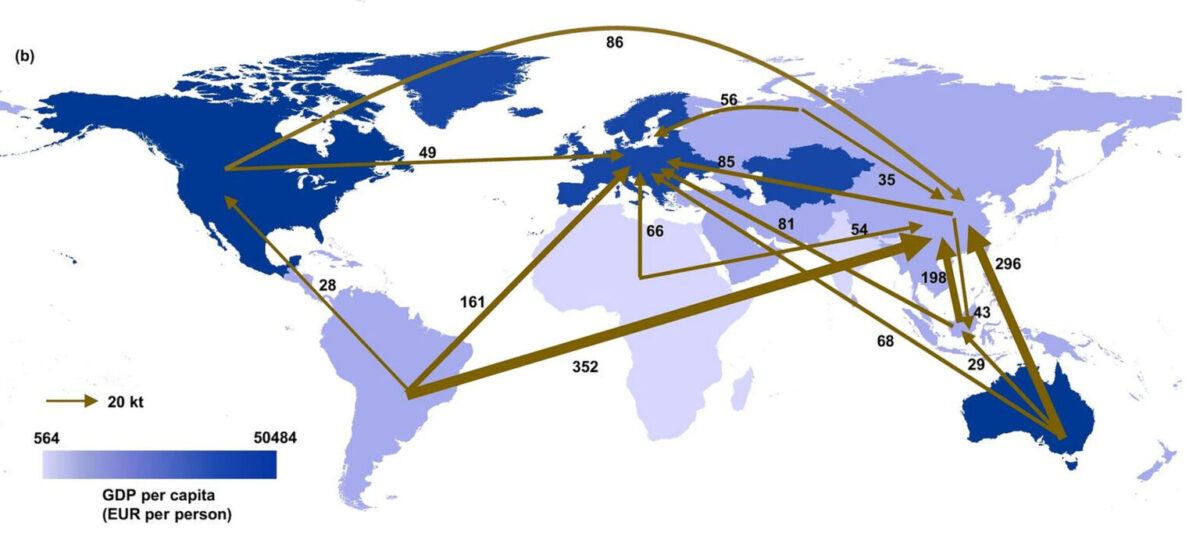From pv magazine global
An international research group has used quantitative models to analyze data about the flow of iron, copper, aluminum, and other precious metals from source to end-use destination in the renewable energy infrastructure value chain to reveal trends and potential risks.
The study found a growing inequality in metal footprints, which are defined in the paper as the total metal ores embodied in the renewable power value chains. The authors said this kind of uneven activity may “hinder the just net-zero transition and climate change mitigation actions” and that there is an urgency “to establish a metal-efficient and green supply chain for upstream suppliers [source countries of metals] as well as downstream renewable power installers for just transition in the power sector across the globe.”
Noting that the amount of metal used in renewable energy infrastructure has increased by 97% in the ten-year period from 2005 to 2015, the paper’s authors examined the flow of metals in seven value chains, including solar, solar thermal, ocean, wind, hydro, bioenergy, and geothermal.
They developed a multi-regional input-output model and a value chain decomposition model that are said to enable the analysis of the activity for worldwide regions and individual countries. They sourced data from Exiobase, a dataset used that estimates emissions and resource extractions by industry, developed by a consortium of research institutes in projects financed by the European research framework programs.
The scientists found imbalances within the global value chains studied and attributed them to the continuous outsourcing of metal demand for the renewable power sector to developing economies. “Developed economies occupy the high-end segments of the renewable power value chain, while allocating metal-intensive (but low value-added) production activities to developing economies,” they also stated, noting that some economies are contributing a considerable amount of metal from their reserves to fulfill foreign demand but have only minimal economic benefit.
The academics presented their findings in the paper “Tracing metal footprints via global renewable power value chains,” published in nature communications. The research group comprises scientists from China’s Shandong University, Fudan University, Guangxi University, and the Chinese Academy of Sciences (CAS), as well as from the University of Maryland in the United States.
“Our results indicate that the trade structure can be modified to mitigate metal supply risk and consumption inequality along global renewable power value chains (RPVCs) among economies,” they concluded. “Import-dependent developed economies can adjust the distribution of traded goods towards metal-efficient sources.”
This content is protected by copyright and may not be reused. If you want to cooperate with us and would like to reuse some of our content, please contact: editors@pv-magazine.com.








By submitting this form you agree to pv magazine using your data for the purposes of publishing your comment.
Your personal data will only be disclosed or otherwise transmitted to third parties for the purposes of spam filtering or if this is necessary for technical maintenance of the website. Any other transfer to third parties will not take place unless this is justified on the basis of applicable data protection regulations or if pv magazine is legally obliged to do so.
You may revoke this consent at any time with effect for the future, in which case your personal data will be deleted immediately. Otherwise, your data will be deleted if pv magazine has processed your request or the purpose of data storage is fulfilled.
Further information on data privacy can be found in our Data Protection Policy.